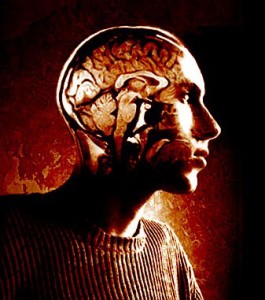Seifert and Sutton, Educational Psychology (2009)
From the authors, “All in all, we hope that you find Educational Psychology a useful and accessible part of your education. If you are preparing to be a teacher, good luck with your studies and your future! If you are an instructor, good luck with helping your students learn about this subject!”
Purchase print copy $49.95 (365 pages, 12 chapters, see table of contents below)
Download Free PDF (color, 4 Mb, 365 pages).
Original Source: Global Text Project
Table of Contents
1. The changing teaching profession and you.
- The joys of teaching
- Are there also challenges to teaching?
- Teaching is different from in the past
- How educational psychology can help
2. The learning process
- Teachers’ perspectives on learning
- Major theories and models of learning
3. Student development.
- Why development matters.
- Physical development during the school years
- Cognitive development: the theory of Jean Piaget
- Social development: relationships,personal motives, and morality
- Moral development: forming a sense of rights and responsibilities
- Understanding “the typical student” versus understanding students.
4. Student diversity
- Individual styles of learning and thinking.
- Multiple intelligences.
- Gifted and talented students
- Gender differences in the classroom
- Differences in cultural expectations and styles
- Oppositional cultural identity.
- Accommodating cultural diversity in practice.
5. Students with special educational needs
- Look at these three people from the past. All were assigned marginal status in society because of beliefs about disabilities:.
- Growing support for people with disabilities: legislation and its effects
- Responsibilities of teachers for students with disabilities.
- Categories of disabilities—and their ambiguities
- Learning disabilities.
- Attention deficit hyperactivity disorder.
- Intellectual disabilities.
- Behavioral disorders.
- Physical disabilities and sensory impairments
- The value of including students with special needs
6. Student motivation
- Motives as behavior
- Motives as goals.
- Motives as interests.
- Motives related to attributions
- Motivation as self-efficacy.
- Motivation as self-determination
- Expectancy x value: effects on students’ motivation
- TARGET: a model for integrating ideas about motivation.
7. Classroom management and the learning environment
- Why classroom management matters
- Preventing management problems by focusing students on learning.
- Responding to student misbehavior.
- Keeping management issues in perspective.
8. The nature of classroom communication
- Communication in classrooms vs communication elsewhere.
- Effective verbal communication.
- Effective nonverbal communication.
- Structures of participation: effects on communication
- Communication styles in the classroom.
- Using classroom talk to stimulate students’ thinking
- The bottom line: messages sent, messages reconstructed
9. Facilitating complex thinking
- Forms of thinking associated with classroom learning
- Critical thinking
- Creative thinking
- Problem-solving
- Broad instructional strategies that stimulate complex thinking
- Teacher-directed instruction
- Student-centered models of learning.
- Inquiry learning
- Cooperative learning.
- Examples of cooperative and collaborative learning
- Instructional strategies: an abundance of choices.
10. Planning instruction
- Selecting general learning goals.
- Formulating learning objectives
- Differentiated instruction and response to intervention.
- Students as a source of instructional goals.
- Enhancing student learning through a variety of resources.
- Creating bridges among curriculum goals and students’ prior experiences.
- Planning for instruction as well as for learning.
11. Teacher-made assessment strategies.
- Basic concepts.
- Assessment for learning: an overview of the process
- Selecting appropriate assessment techniques I: high quality assessments
- Reliability
- Absence of bias
- Selecting appropriate assessment techniques II: types of teacher-made assessmentsSelected response items
- Constructed response items
- Portfolios.
- Assessment that enhances motivation and student confidence
- Teachers’ purposes and beliefs
- Choosing assessments
- Providing feedback
- Self and peer assessment
- Adjusting instruction based on assessment.
- Communication with parents and guardians.
- Action research: studying yourself and your students.
- Grading and reporting
12. Standardized and other formal assessments
- Basic concepts.
- High-stakes testing by states
- International testing.
- International comparisons
- Understanding test results.
- Issues with standardized tests
Appendices and Resources
- Appendix A: Preparing for licensure.
- Appendix B: Deciding for yourself about the research
- Appendix C: The reflective practitioner.
- Resources for professional development and learning
- Reading and understanding professional articles
- Action research: hearing from teachers about improving practice.
- The challenges of action research.
- Benefiting from all kinds of research

